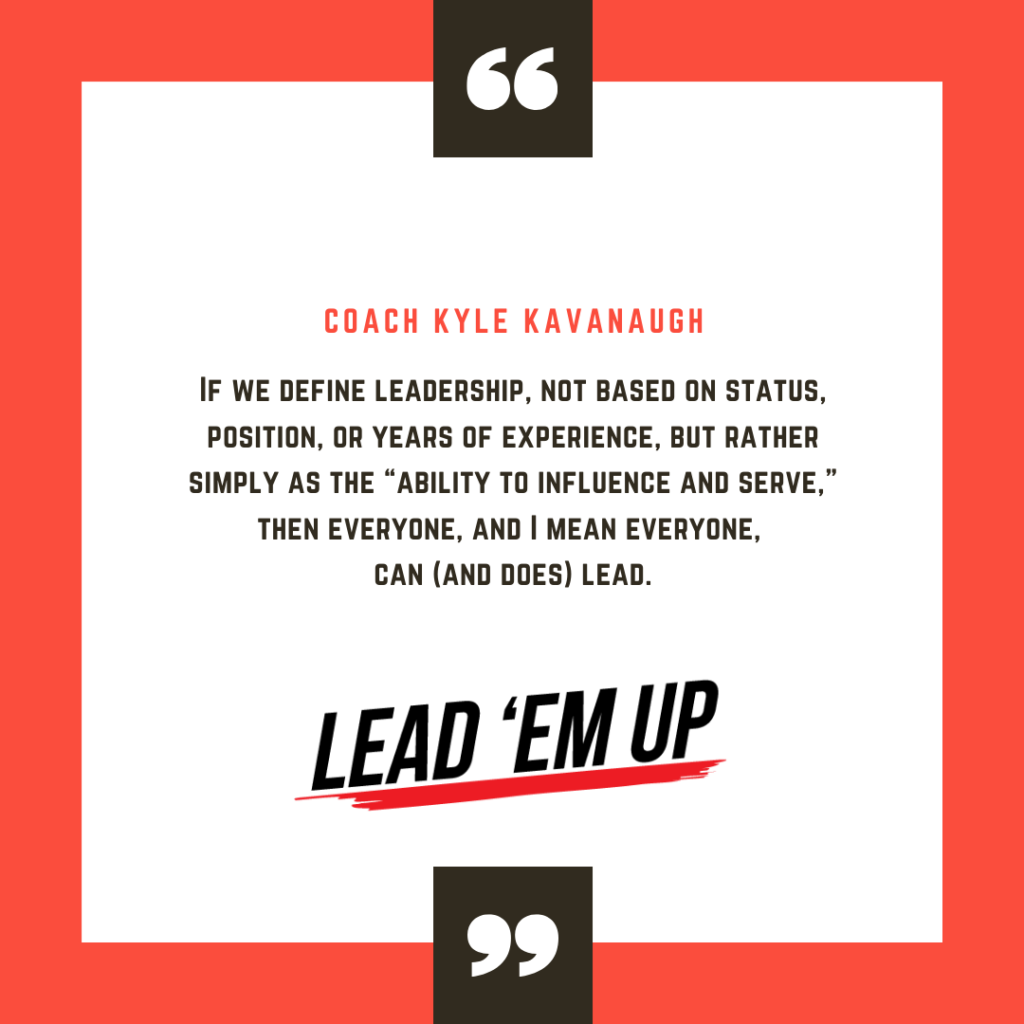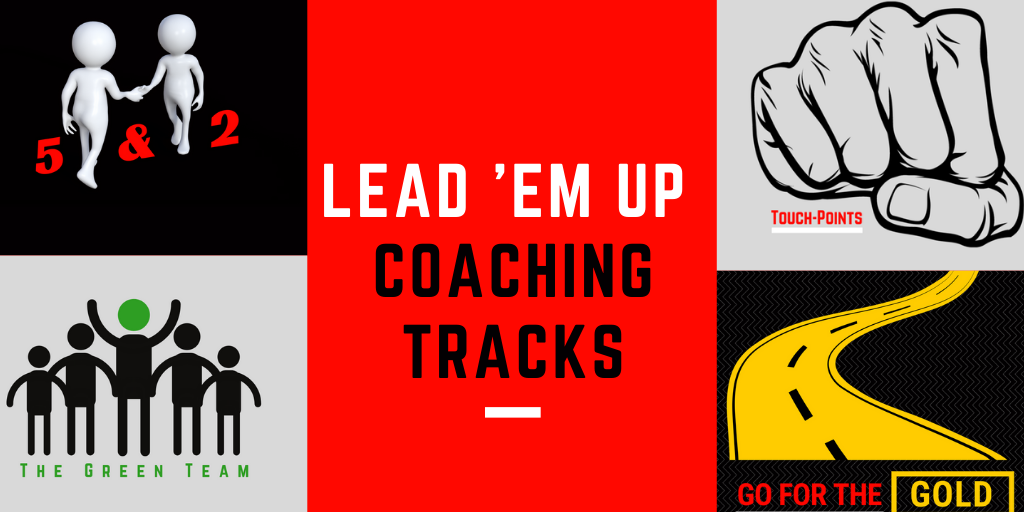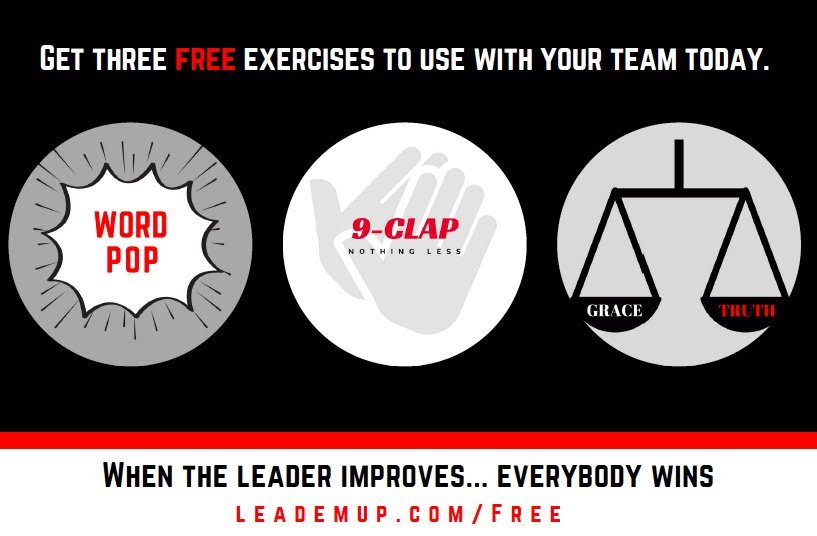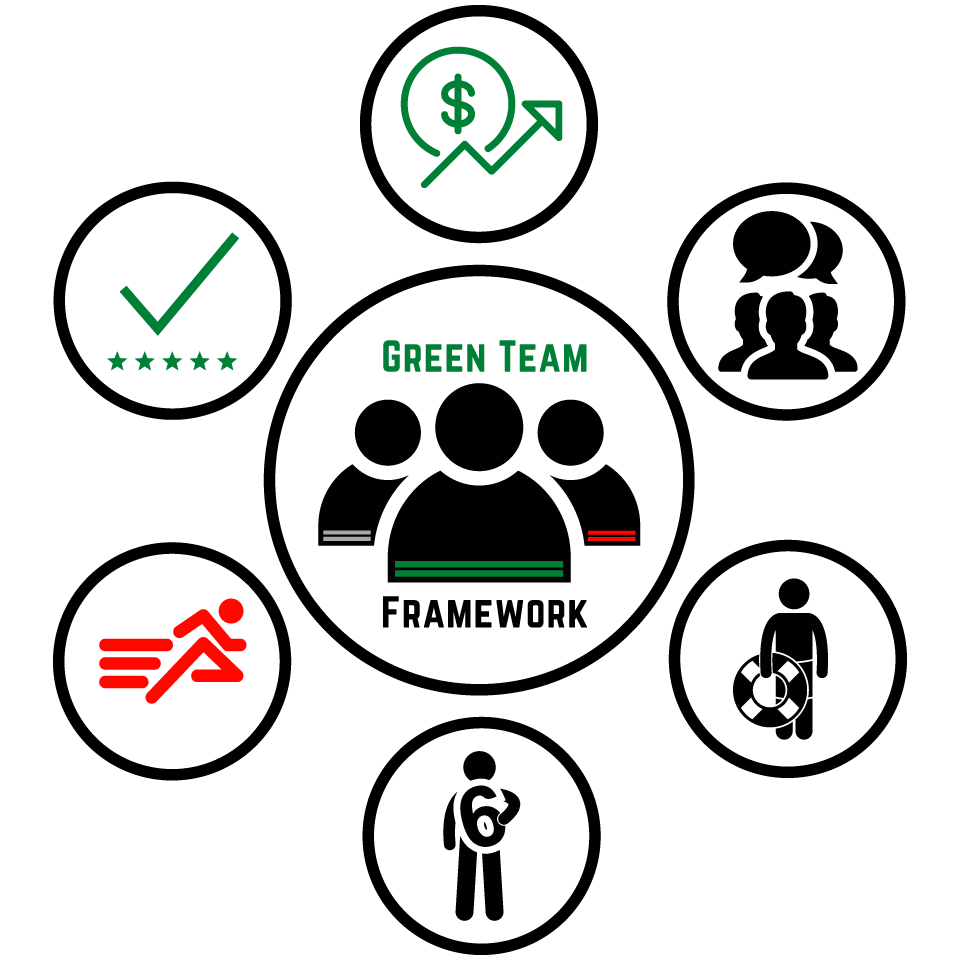Home / Blog / Self-Awareness /

Leadership is all around us. We know this, or at least we think we do. We think we recognize it when we see it or hear it. The TV cameras readily recognize the emotional player on the sidelines rallying their teammates with an impassioned speech. We attribute leadership to people in positions of authority.
Most often it’s the head coach of the program, the president of the company, or principal of a school. Maybe it’s the quarterback or point guard because they are the ones running the show on the field or the court. But by that logic, if leadership follows a certain hierarchy, then the assistant coaches can’t lead as much as the head coach, the last freshman on the bench can’t lead as much as the senior shortstop, or the grad assistant can’t lead as much as the tenured professor.
I’ve coached freshman who were better leaders than seniors
I’ve realized over my career in teaching and coaching and my time as a “leader” that is not always the case. That line of thinking seems a bit short-sided and flawed. By my own account I’ve coached freshman who were better leaders than seniors, seen bench guys rally a team more than the leading scorer, and I myself many times a better leader while I was an assistant coach as opposed to my time running a program. If those situations can in fact be the case, if it’s really not that linear and simple, then how do we define what leadership really is?
Have you ever sat down to develop your own definition of leadership? Do you know what it looks like? What it feels like? What it sounds like? Do you believe it is innately born or can it be developed? Who in an organization or program is allowed to lead? Does leadership accompany certain levels of talent? Should it come with seniority or experience? If you’ve never taken time to think about this I suggest you do so. How would the answers to these questions affect your program and the players involved?
Are we surrounded by more leaders than we realize?
A lot of time our perception of something is limited by our definition or understanding (or lack thereof) of a topic which in turn becomes our reality. Is it possible that we are actually surrounded by more leadership opportunities, and therefore more leaders than we realize? Could our short-sided definition of how we view leadership be limiting ourselves or those around us in current roles and our capacity to lead?
 Are we waiting for a promotion or for the seniors to graduate before we feel it’s “our turn” to lead? And even more importantly, will we be ready when that time comes? By removing those restrictions and operating under the assumption that leadership is INFLUENCE and is a SKILL that can be DEVELOPED with practice then we open up a whole new world of possibilities for those not typically thought of as leaders.
Are we waiting for a promotion or for the seniors to graduate before we feel it’s “our turn” to lead? And even more importantly, will we be ready when that time comes? By removing those restrictions and operating under the assumption that leadership is INFLUENCE and is a SKILL that can be DEVELOPED with practice then we open up a whole new world of possibilities for those not typically thought of as leaders.
If we define leadership, not based on status, position, or years of experience, but rather simply as the “ability to influence and serve,” then everyone, and I mean everyone, can (and does) lead. Every single day. Simply the way you walk in a room can have a great impact on those already there or those about to enter.
Everyone can, and does lead
How you greet your kids at the door before they walk into class influences them for the rest of class or perhaps even the rest of the day. A simple smile or “good morning” to a coworker, quick game of rock, paper, scissors with a student, or dapping up a player as they head to the floor before practice can have an enormous influence on that person’s attitude, engagement, effort, and subsequently their ability to lead.
Everyone can, and does lead, whether they realize it or not. Over the last few days I have tried to take stock and identify all the different leadership opportunities where I had the chance to influence those around me and how my students, coworkers, friends, and family influenced me. Those situations were undoubtedly too many to count. They were nonstop, from sunup to sundown. A student of mine shined during a presentation where they previously struggled which inspired others in the class that they could do the same.
A coworker brought me a cup of coffee when I missed my chance during a break because I covered someone else’s duty. A coach reached out to me on twitter about helping them develop a section of their practice plan. My wife and I took the time to connect over dinner to discuss our day. My 3 year old decided how easy (or difficult) it was going to be to get ready for bed and get dressed in the morning.
That’s right, my 3 year old is a leader!
After all, who is in more of a position to influence you other than your toddler?!! The exercise was enlightening to say the least. It was a reminder that we as leaders are constantly “on” and will influence those around us for better, or for worse, every single day. Which is why viewing leadership as a skill which can be developed and crafted becomes an important point, and one where Lead ‘Em Up as a program offers it’s most value.
What value does Lead ‘Em Up provide?
Getting your #Reps and intentionally working on making that initial connection (Touch Points), using a connection to strengthen a relationship (Going for the Gold), your ability to listen and understand the conversation (Process), serving others (The Six) or celebrating them (Me/We/You & Hype Battle), simply how you walk in a room or respond to adversity (Body Language Runway), and bringing a level of positive energy needed to influence others (Enthusiasm Captains & Vitamin D) is what separates the good leaders from the bad, and the great leaders from the good. Your ability to focus on (Detail Grab Bag) and improve in those areas (1%) will not only grow and strengthen the leader within yourself, but through your influence and service, develop the potential leaders around you (The Green Team).
 So if we already have the capability to influence others, that is to say LEAD others, then let’s work towards improving that SKILL, and right now is the best time. Why wait? We are already equipped with what we need to begin. Your current position or role is the perfect time and place to get started.
So if we already have the capability to influence others, that is to say LEAD others, then let’s work towards improving that SKILL, and right now is the best time. Why wait? We are already equipped with what we need to begin. Your current position or role is the perfect time and place to get started.
It’s a skill we already possess, and while everyone may start at different places with different strengths we already have what we need to improve once we redefine leadership, change its perception, and recognize the endless possibilities all around us. We just have to go to work and Lead ‘Em Up.
Not familiar with Lead ‘Em Up – we help build special teams by developing athletes into the leaders needed to win. We provide coaches access to our full library of drills and exercises for you to use with your team.
Learn more here.

Have fun and #LeadEmUp




